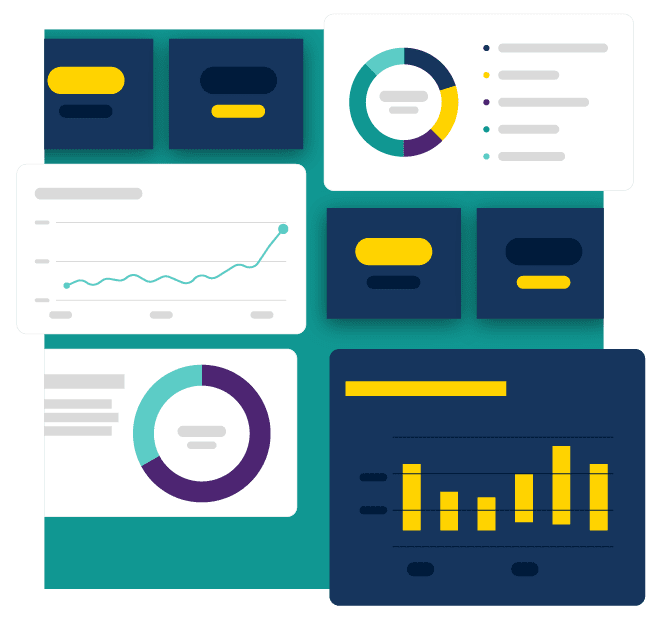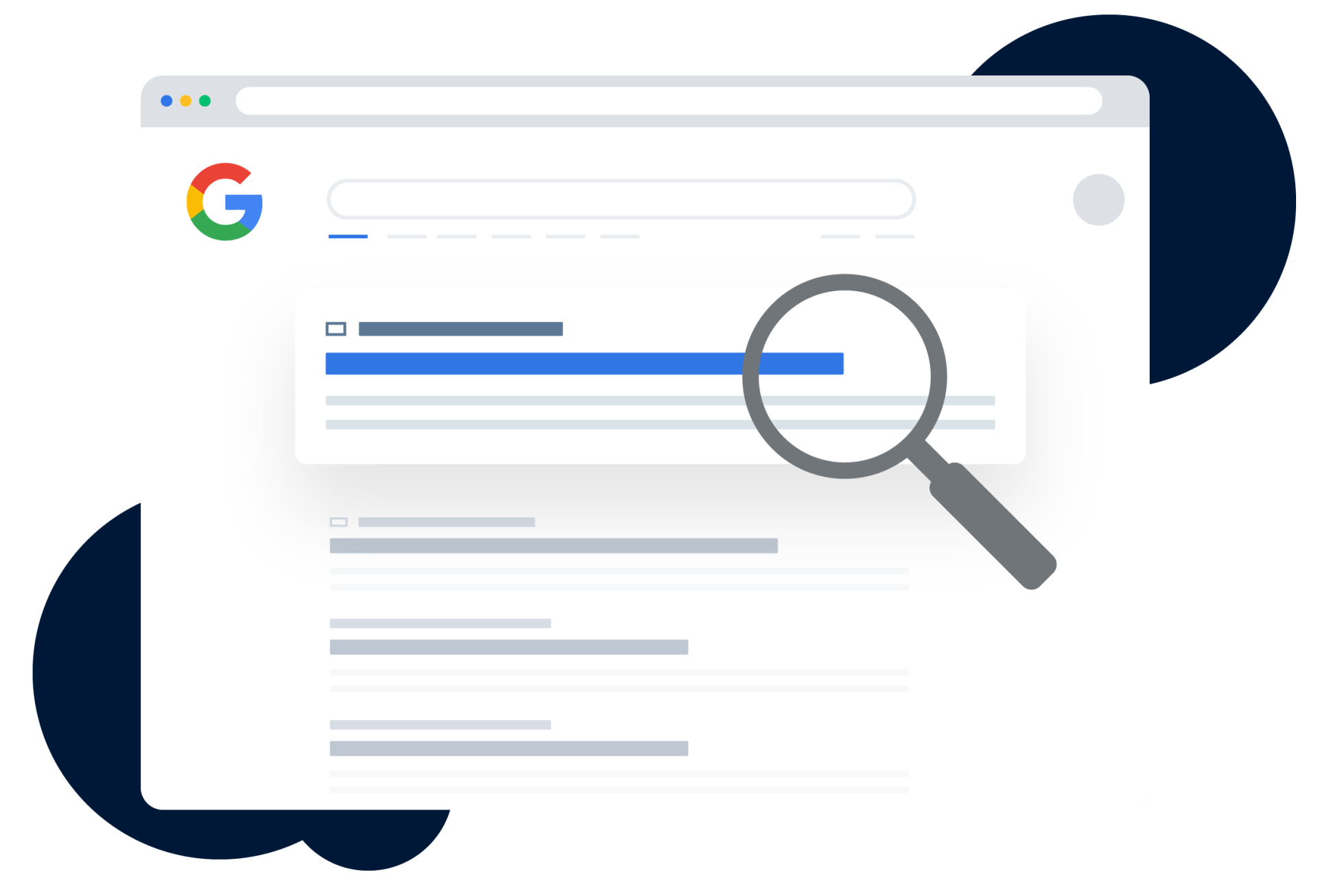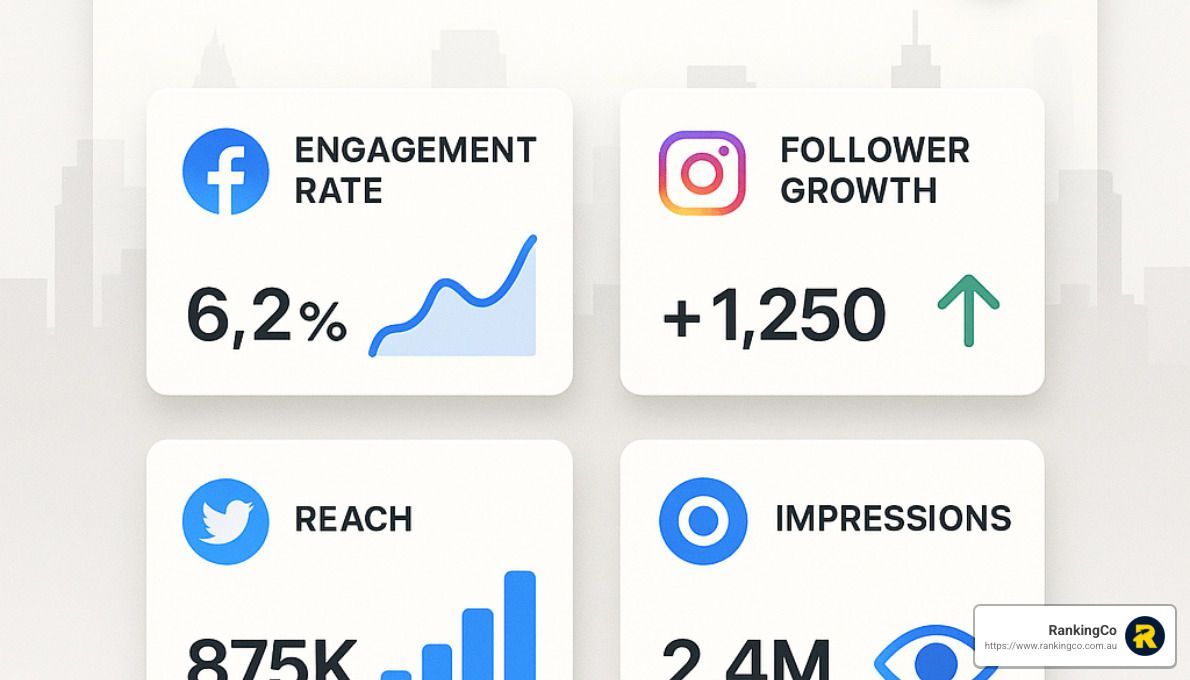SEM Analysis Unveiled: Strategies for Marketing Mastery
Search engine marketing analysis is crucial for businesses aiming to stand out in today's competitive marketplace. With countless businesses clamouring for attention, search engine marketing (SEM) allows companies to use paid ads to connect directly with potential customers at the perfect time. Anyone involved in digital marketing or owning a small business may find it helpful to know that SEM strategies involve:
- Understanding SEM basics: Utilising paid ads to appear prominently in search results.
- Keyword-driven campaigns: Identifying and bidding on the right keywords.
- Competitive edge: Ensuring your business appears when customers are ready to buy.
SEM's power is its ability to place your brand front and center, grabbing attention exactly when needed. This is why SEM can be a game-changer in attracting more potential buyers online.
My name is Amber Porter, and as the CEO of RankingCo, I've dedicated my journey to providing small and medium-sized businesses with powerful, accessible digital marketing strategies. Leveraging my experience in search engine marketing analysis, I aim to help businesses not just survive but thrive in the digital field.
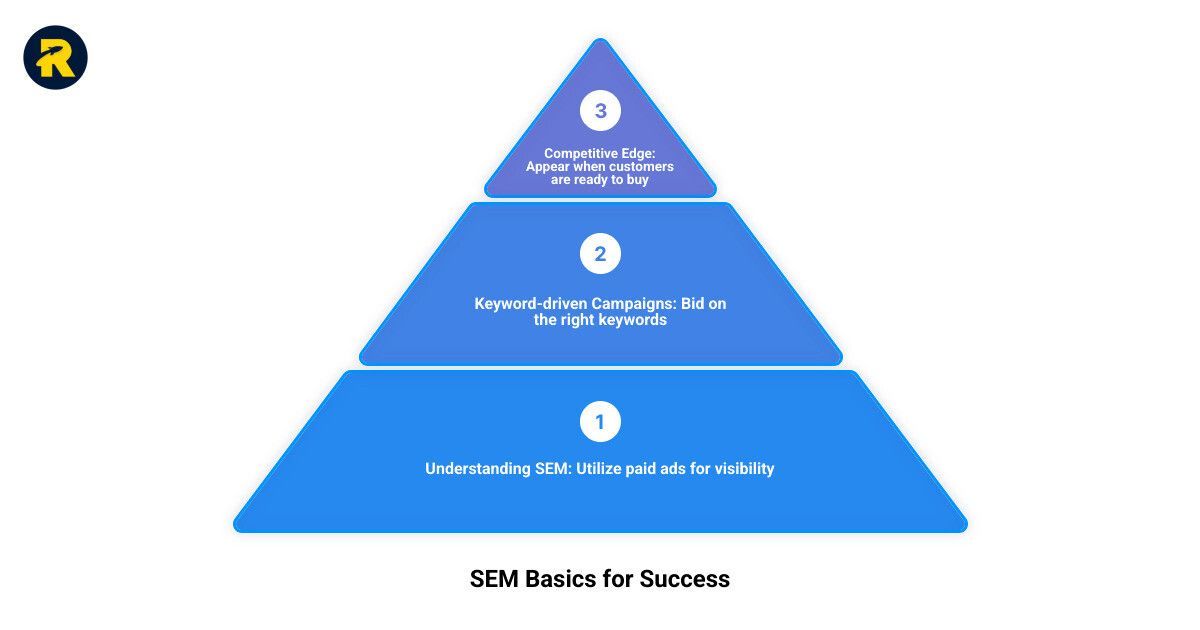
Understanding Search Engine Marketing (SEM)
Search engine marketing (SEM) is a powerful tool in the digital marketing toolkit. It helps businesses reach their target audience through paid advertisements on search engine results pages (SERPs). Unlike organic strategies like SEO, SEM uses paid tactics to ensure your brand gets noticed.
Definition
At its core, search engine marketing involves promoting a business through paid ads that appear on SERPs. These ads are designed to catch the eye of potential customers searching for products or services like yours. By bidding on specific keywords, your ads can appear at the top of search results, making them highly visible to users.
Importance
Why is SEM important? Simply put, it places your brand front and center when potential customers are actively searching for solutions. This visibility can drive awareness, boost consideration, and build trust with your audience. The higher your ads rank, the more likely they are to be seen, clicked, and converted into sales.
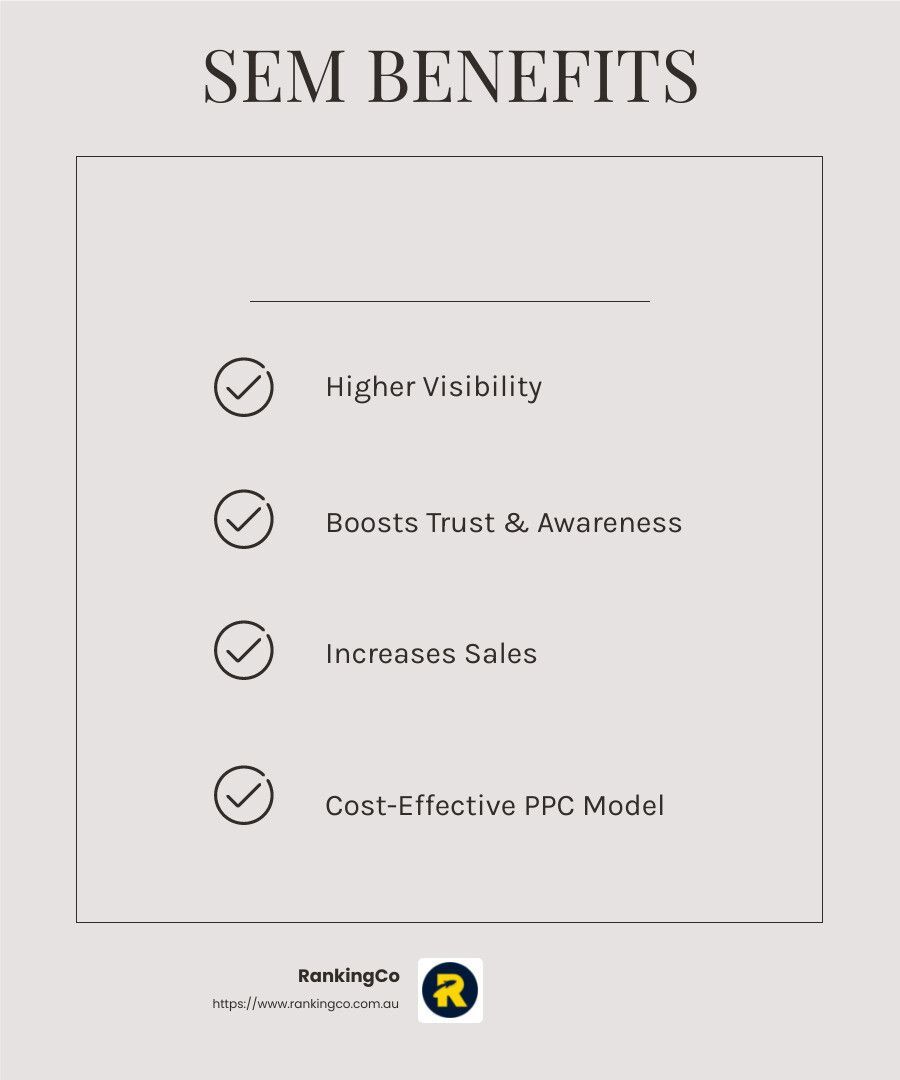
Pay-Per-Click Model
The pay-per-click (PPC) model is a cornerstone of SEM. In this model, advertisers only pay when someone clicks on their ad. This makes SEM a cost-effective strategy because you only pay for actual engagement, not just impressions. With PPC, businesses can control their spending by setting a maximum bid amount for each keyword. This means you can tailor your campaigns to suit your budget while still reaching your target audience.
The effectiveness of SEM lies in its precision. By targeting specific keywords, you can ensure your ads reach the right people at the right time. This precision not only increases conversion rates but also maximizes the impact of your marketing efforts.
In summary, SEM is more than just a marketing tactic—it's a strategic approach to connecting with customers at the moment they need you most. By using paid ads, businesses can improve their visibility, drive relevant traffic, and ultimately achieve their marketing goals.
Next, we'll dive into the key components of search engine marketing analysis and how they contribute to a successful SEM strategy.
Search Engine Marketing Analysis: Key Components
Search engine marketing (SEM) is like a puzzle, and each piece is crucial for success. Let's break down the key components of search engine marketing analysis: keyword research, ad creation, bid management, landing page optimisation, and performance tracking.
Keyword Research
Keywords are the foundation of SEM. They connect your ads to the search queries of potential customers. By using tools like Google Ads Keyword Planner and SEMrush, businesses can identify the most effective keywords to target.
Thorough keyword research also helps in identifying negative keywords. These are terms that you want to exclude from your campaigns because they are unlikely to lead to conversions. For instance, if you sell ice cream, you might exclude "ice cream recipes" as a keyword to avoid attracting users who are not looking to buy ice cream.
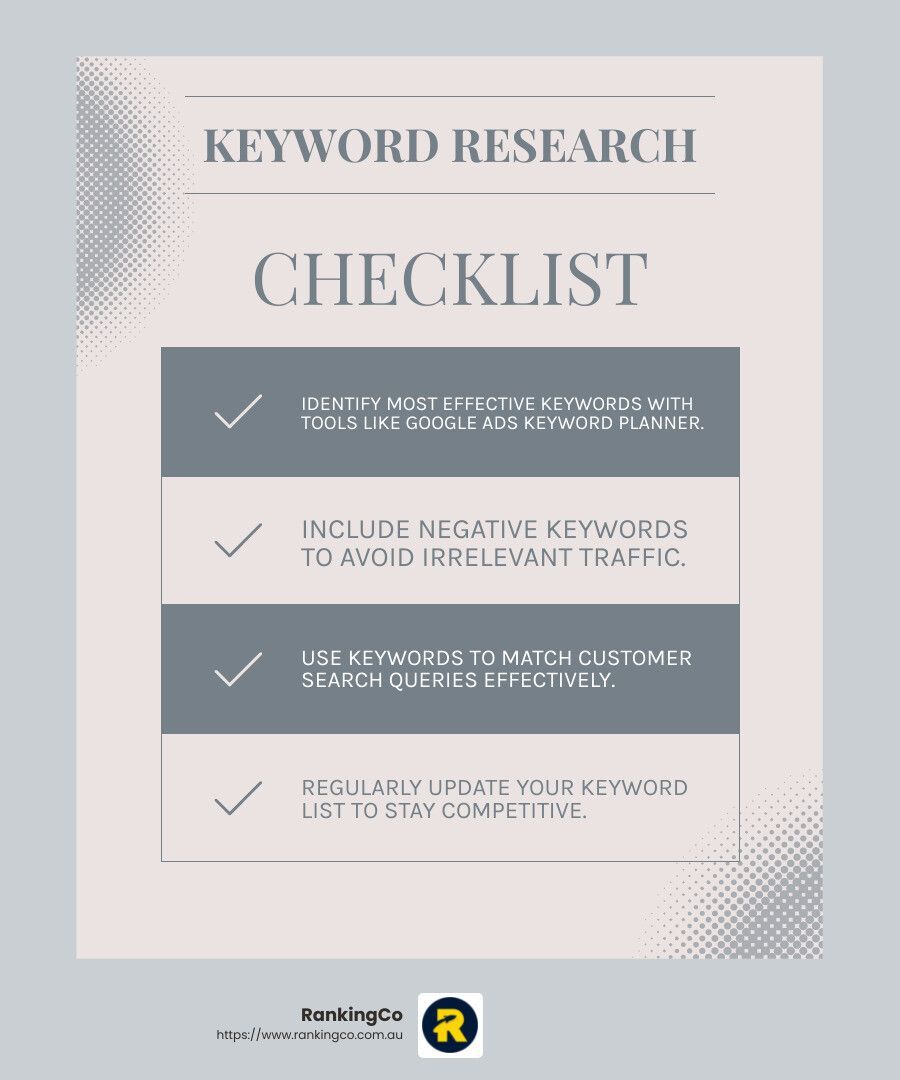
Ad Creation
Creating compelling ads is an art. Your ad needs to stand out and catch the eye of potential customers. This involves crafting engaging headlines and persuasive copy that resonate with your audience. Your ad is often the first impression of your brand, so make it count.
Bid Management
In SEM, you're not just paying to be seen—you're bidding for the opportunity. Bid management involves setting a maximum bid amount for each keyword. This requires a balance between staying competitive and managing your budget effectively. The ad auction process determines which ads appear on the SERP and in what order. It's not just about the highest bid but also the relevance and quality of your ad.
Landing Page Optimisation
A click on your ad should lead to a well-optimised landing page. This page must be relevant to the ad and provide a seamless user experience. Use important keywords and ensure the page loads quickly. A/B testing can be a powerful tool here, helping you refine elements like layout, content, and calls to action to boost conversions.
Performance Tracking
Once your SEM campaign is live, tracking its performance is essential. Tools like Google Analytics enable you to monitor key metrics such as click-through rates, conversion rates, and return on ad spend. This data is invaluable for making informed adjustments to your keywords, ad copy, and bidding strategy.
By focusing on these key components, businesses can craft a robust SEM strategy that drives results. Next, we'll explore how to develop an effective SEM strategy that aligns with your business goals and adapts to the changing digital landscape.
Developing an Effective SEM Strategy
Crafting an effective SEM strategy is like planning a road trip. You need a clear destination, a route, and flexibility to adjust along the way. Here’s how to set your SEM journey on the right path:
Set Clear Goals
Start by defining what you want to achieve. Is it more website visits, higher sales, or increased brand awareness? Clear goals guide your SEM strategy and help measure success. For instance, if your goal is to boost sales, focus on conversion rates and return on ad spend.
Research Competitors
Understanding the competition is crucial. Dive into what your competitors are doing—what keywords they target, the ads they run, and their landing pages. This research can reveal gaps in the market and opportunities for differentiation. Use tools like SEMrush to gain insights into your competitors' strategies.
Select the Right PPC Search Engine
Choosing the right platform is key. Google Ads is the largest, but don’t overlook Bing Ads. Bing can offer lower costs and higher click-through rates in some cases. Consider your target audience's preferences and where they are most active.
Research Relevant Keywords
Keywords are the backbone of your SEM campaigns. Use tools like Google Keyword Planner to find high-quality, relevant keywords. Aim for a sweet spot—keywords with good search volume but not too competitive. Don’t forget to identify and exclude negative keywords to avoid wasted spend.
Set a Budget
Budgeting is about balance. Determine how much you’re willing to spend and allocate it wisely. Focus on high-performing keywords and ads. Start small, especially if you're new to SEM, and scale up as you gain insights into what works best.
Get Creative
Your ad copy should grab attention. Use clear, direct language and highlight what makes your product unique. Experiment with different headlines and calls to action. Creativity can set you apart from competitors.
Test and Innovate
SEM is not a set-and-forget strategy. Regularly test different elements of your campaigns, like ad copy and landing pages. Use A/B testing to see what resonates with your audience. Innovation keeps your strategy fresh and effective.
By following these steps, you can build a dynamic SEM strategy that aligns with your business goals and steers the competitive digital landscape. Next, we'll dive into emerging trends in SEM, like AI and machine learning, that are shaping the future of digital marketing.
Emerging Trends in SEM
The world of search engine marketing is shifting rapidly, and staying ahead means embracing new technologies and strategies. Let's explore some of the key emerging trends that are reshaping SEM.
AI and Machine Learning
Artificial Intelligence (AI) and Machine Learning (ML) are game changers in SEM. They provide marketers with powerful tools to analyse vast amounts of data, automate tasks, and make informed decisions.
A study by McKinsey highlights that AI-powered marketing activities can deliver an average ROI of 20%. This is significant, especially in SEM, where AI helps in identifying patterns and predicting trends.
How AI Transforms SEM:
- Keyword Insights: AI tools can analyse search data to suggest effective keywords and even predict the success of certain keywords over others.
- Bid Management: Automates the bidding process, adjusting bids in real-time to maximise ROI.
- Ad Creation: AI can generate ad copy custom to specific audiences, increasing relevance and engagement.
Voice Search Optimisation
With the rise of smart speakers and voice assistants, voice search is becoming a crucial part of SEM. Consumers are increasingly using voice commands for searches, and businesses need to adapt their strategies accordingly.
Why Voice Search Matters:
- Conversational Keywords: People often use natural language when speaking, so keywords should reflect this conversational style.
- Local SEO: Voice searches are often local in nature, such as "find a coffee shop near me," making local SEO optimisation vital.
- Quick Answers: Optimising for featured snippets can help capture voice search traffic, as voice assistants often read these snippets aloud.
Data-Driven Personalisation
Personalisation is no longer optional—it's expected. Consumers want custom experiences, and data-driven personalisation in SEM can deliver just that.
Benefits of Personalisation:
- Hyper-Relevant Ads: Using data on user behaviour and preferences, marketers can create ads that resonate personally with each user.
- Improved Customer Experience: Personalised content leads to higher engagement and conversion rates.
- Predictive Analytics: By leveraging data, marketers can anticipate user needs and adjust strategies proactively.
As we accept these emerging trends, SEM becomes more about understanding and predicting user behaviour than just bidding on keywords. The integration of AI, voice search, and personalisation is paving the way for more effective and engaging marketing strategies.
In the next section, we'll tackle frequently asked questions about search engine marketing analysis to provide clarity on how to effectively implement these strategies.
Frequently Asked Questions about Search Engine Marketing Analysis
How to do search engine marketing analysis?
Search engine marketing analysis involves several key components that help optimise your SEM campaigns. Here's a quick breakdown:
- Keyword Research: Start by identifying the most effective keywords for your campaign using tools like Google Ads Keyword Planner and Semrush. Focus on keywords with high relevance and search volume.
- PPC Campaigns: Plan your pay-per-click (PPC) campaigns by selecting the right keywords and creating compelling ads. You only pay when someone clicks your ad, so crafting effective ad copy is crucial.
- Ad Copy: Your ad copy should be clear, engaging, and relevant to the keywords. Test different versions to see which performs best.
- Landing Pages: Ensure your landing pages are optimised for user experience and match the intent of your ads. A/B testing can help improve conversion rates.
- Bid Strategy: Determine your bidding strategy based on your budget and goals. Automated bidding can help optimise costs and improve ad placement.
- Budget Allocation: Set a clear budget for your campaigns. Consider using a mix of short-term and long-term strategies to maximise ROI.
- Optimisation: Continuously monitor and adjust your campaigns. Use analytics tools to track performance and make data-driven decisions.
What's the difference between SEO and SEM?
SEO (Search Engine Optimisation) and SEM (Search Engine Marketing) are both strategies to increase visibility on search engines, but they have distinct differences:
- SEO focuses on organic search results. It involves optimising your website and content to rank higher without paying for ads. Key techniques include keyword optimisation, content quality, and link building.
- SEM involves paid advertisements to appear in search engine results. It includes strategies like PPC, where you pay for your ad to appear at the top of search results for specific keywords.
Organic vs. Paid Search: While SEO aims to improve organic rankings, SEM uses paid strategies to achieve immediate visibility. Both are important, but SEM can deliver faster results.
What are the 4 components of the SEM strategy?
To build a successful SEM strategy, focus on these four components:
- Keyword Research: Identify and target the right keywords that align with your business goals and audience needs.
- Ad Creation: Develop compelling ads that grab attention and drive clicks. Use engaging headlines and clear calls to action.
- Bid Management: Optimise your bidding strategy to balance cost and visibility. Automated tools can help manage bids effectively.
- Landing Page Optimisation: Ensure your landing pages provide a seamless user experience and align with your ad's message. This increases the likelihood of conversions.
By mastering these elements, you can improve your search engine marketing analysis and achieve better results. In the following section, we'll dig into emerging trends in SEM to keep your strategies up-to-date.
Conclusion
As we wrap up our exploration of search engine marketing analysis, it's evident that the landscape of SEM is rapidly evolving. At the forefront of this evolution is RankingCo, a Brisbane-based digital marketing powerhouse. We pride ourselves on integrating advanced AI technologies to improve the efficacy of our digital marketing strategies. This technological edge not only allows us to analyse market trends accurately but also enables us to create highly effective campaigns for our clients.
In today's dynamic digital marketplace, staying ahead means leveraging cutting-edge tools and techniques. The integration of AI and machine learning in SEM is changing how we approach marketing strategies. These technologies allow us to automate routine tasks, analyse vast amounts of data, and make informed decisions that boost campaign performance. As a result, our clients benefit from more targeted and efficient advertising efforts.
Market trends are constantly shifting, and businesses must adapt to maintain their competitive edge. At RankingCo, we stay attuned to these changes, ensuring that our clients' campaigns are always aligned with the latest advancements. From voice search optimisation to data-driven personalisation, we accept emerging trends to deliver superior results.
Our commitment to innovation and excellence sets us apart. By focusing on effective campaigns that resonate with audiences, we help small businesses rank better in search engines and achieve their marketing goals. Whether it's through Google Ads, Meta Ads, or Bing Ads, our expertise in SEM and SEO ensures that our clients see tangible results.
For those looking to lift their search engine marketing efforts, partnering with RankingCo means accessing a wealth of knowledge and cutting-edge strategies. Explore our SEO services to see how we can help your business grow in the ever-changing digital landscape.
In this world of digital marketing, staying informed and adaptable is key. With RankingCo by your side, you're not just keeping up with the changes—you're setting new benchmarks in performance and results.
